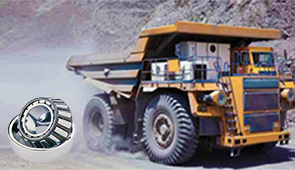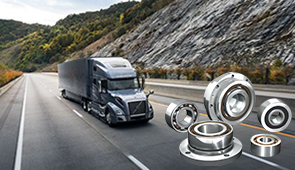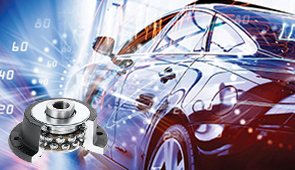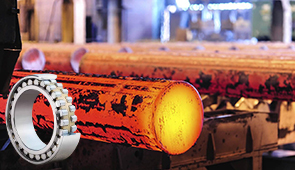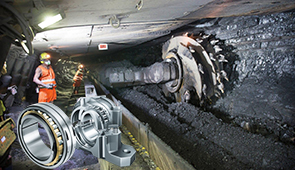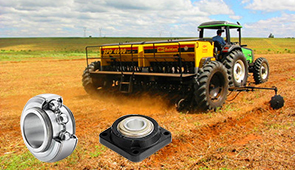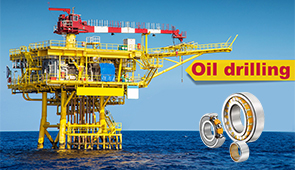Ultimate Guide: Spindle Bearings for Maximum Speed and Accuracy
Spindle bearings play a pivotal role in the performance and reliability of various industrial machinery and precision tools. Their function impacts not only the speed but also the accuracy and lifespan of spindle systems, making them an essential component in applications ranging from manufacturing to high-speed machining. This guide is designed to provide a comprehensive overview of spindle bearings, covering critical aspects such as design considerations, material selection, performance optimization, and maintenance strategies. By understanding these factors, readers will gain the technical knowledge needed to enhance the efficiency and precision of their equipment while minimizing downtime and operational costs. Whether you are a mechanical engineer, a technician, or an industry professional, this guide aims to serve as an invaluable resource for optimizing spindle performance.
How to choose the right spindle bearing for your application?
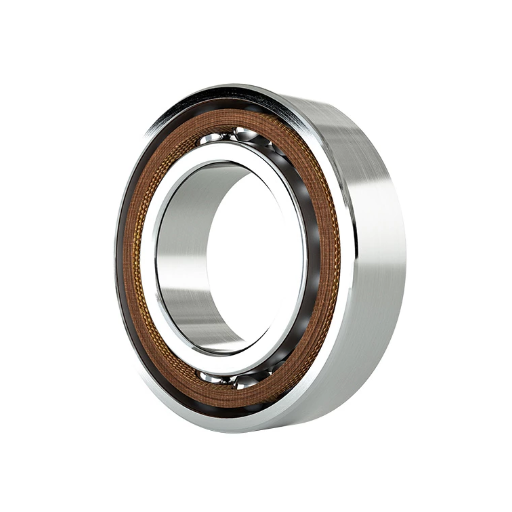
Factors to consider: speed, accuracy, and load requirements
In selecting a spindle bearing for my application, my focus is on three technical requirements: speed, accuracy, and load requirements. In speed, I look at the operational maximum rotation speed required for the application, which is expressed in RPM (revolutions per minute). Contact ball bearings, which are used for high-speed applications, often have lower friction and high performance capability without overheating.
For accuracy, I look at how accurate my machining operations have to be, for example, the tolerances expected in microns. Class P4 or P2 (ISO Standard) bearings with tighter tolerances are preferred for high-precision tasks where there is little runout.
Finally, while load requirements steer me to a bearing that would withstand expected axial, radial, or combined loads my selection for radial loads has to be greater. For heavy radial loads roller bearings may be advantages due to their bearing contact area. They perform well under combined loads too, but so do angular contact ball bearings.
Angular contact ball bearings vs. roller bearings
- Load Handling: Due to an angle of contact with the bearing, angular contact ball bearings have superior functionality under combined loads, which include radial and axial loads, contrary to purely vertical or horizontal pushes. In scenarios where a substantial radial load is expected, roller bearings are highly appropriate because of line contact, which has a definite area to withstand stress.
- Speed capability: Because of their compact size and low friction, ball bearings are advantageous from the perspective of high-speed operation. Although roller bearings have a capacity for higher load, they have more rotational friction, which causes a decrease in the amount of speed.
- Misalignment Tolerance: Because of their rigid structure, roller bearings will outperform over a bigger degree of angulated misalignment when compared to angular contact ball bearings which are more sensitive to the height of preload and alignment.
Using these factors -alignment conditions, load angle, volume of movement, and working speed – gives me the matrix necessary to obtain a bearing that satisfies my minimum criteria from a functional and endurance perspective.
High-speed spindle bearing arrangements
I suggest that Angular contact ball bearings should be used in the case of high-speed spindle operations. Such bearings are designed to deal with much greater speeds. In addition, they are capable of accommodating both radial and lateral thrust forces, which is important when dealing with a spindle operating under these conditions.
- Speed capability (RPM): Angular contact ball bearings tend to achieve higher speeds because of their superior speed capability, resulting from lower drag and better construction.
- Axial load capacity: These bearings support significant axial plus radial forces, thus making them suitable for high-speed spindles.
- Preload control: Adequate stiffness coming from preloading allows for better dampening of vibrations which is critical in producing parts with higher precision.
- Material selection: Preferable are bearings with ceramic rolling elements because achieving better speeds with these is much easier due to their light weight and better thermal performance.
Taking into consideration these factors relative to the requirements, I can with certainty determine the precise high-speed spindle bearing arrangement needed.
What are the signs of spindle bearing wear, and when should they?
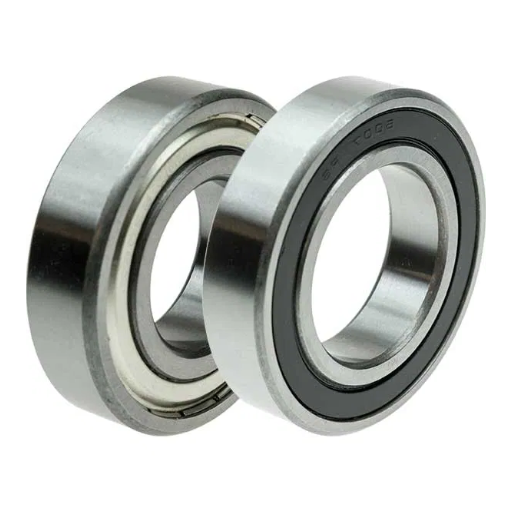
Common symptoms of spindle wear and vibration
The vibration and wear of spindle bearings usually reveal themselves in some symptoms that may be visually observed and assessed through certain technical metrics.
- Out of spec runout tolerance: This refers to an out-of-axis rotation of a spindle due to a misalignment of a spindle shaft. The holistic approach of calculating tolerances on high-precision spindles is usually in the range of less than 1-2 microns. Investigations shall be undertaken where there are magnitude measures greater than this.
- Increased amplitude of vibration: The surge in vibration amplitude of the spindle, measured with an accelerometer, is a sign of worsening bearing imbalances or misplaced components.
- Change in noise levels: Periods of operational activity revealing audible phenomena such as whining nutlation and grinding often are a pointer to worn surface condition of bearing parts. Surface deterioration and inadequate lubrication tend to produce this sound.
- Overly hot: It is clear that worn bearings will cause excessive friction which in turn will well and truly raise the operating temperature of the spindle above the nominal levels. In normal circumstances, bearings operate at certain tolerable temperatures that once exceeded, could result in damage. Continuous exposure over the 70-85ºC mark has to be considered.
- Increased form error: These range from a clear loss of machining precision to external surface texture of the finished products, often detectable in microns.
Spindle function and accuracy can be effectively maintained by continuously observing these factors and managing the symptoms promptly.
Importance of regular maintenance and lubrication
Looking after the machine spindles through routine checks and consistent lubrication is fundamental to preserving their effectiveness and precision. Ignoring these measures will lead to excessive wear, thermal expansion problems, and decreased efficacy of spindles. Adequate lubrication minimizes the friction that occurs in the moving parts, averts overheating, and reduces wear resulting from prolonged work.
- Lubricant viscosity: Ensure that the oil does not deviate from manufacturer requirements, which usually lie between 32-68 cSt at 40C, depending on spindle category and load circumstances.
- Lubrication frequency: Stick to the prescribed lubrication guidelines, which usually vary based on the number of operational hours or cycles.
- Operating temperature range: Make certain that the temperature does not exceed a certain threshold; for example, 40- 60C is typically safe for high-performance spindles when in continuous operation mode. Any excess temperature might generate an alarm suggesting that no or too little lubrication is being used or the loading is incorrect.
- Vibrational intensity: Keep track of the monitoring intensity of the lubrication’s vibrations versus the tolerated range (usually <1 mm/s RMS). Failure to do so can lead to serious bearing deficiency due to lack of lubrication, which, in turn, results in excessive values.
- Dirtying factors: Check rotation systems for undesired elements like parts that can result in poor surface texture finish and spindle longevity, which are harmful. Following ISO cleanliness marking standards (such as ISO 4406 cleanliness codes) is ideal.
The implementation of systematic inspections alongside the scheduled lubrication procedures greatly minimizes the risk of incurring premature spindle failures, thus ensuring equipment accuracy and longevity during operations. This form of preventative planning is crucial when aiming to achieve the highest levels of productivity while mitigating wasteful shutdowns.
When to rebuild or replace your spindle
The decision to reconstruct or replace the spindle is determined by the operational needs, spindle wear condition, and monetary factors that are critical.
- Tolorance on run-out: If the spindle has run-out greater than the allowable tolerance, restoring functionality through rebuilding would be plausible, however, replacement is far favorable option in terms of accuracy requirements.
- Pre-requisite conditions: Vibration levels above the ISO 10816 standard or abnormal noise suggest the presence of damaging bearings. In such a case, rebuilding would be able to re-establish performance clauses; however, if frequent bearing failures are observed, it may be advantageous to implement a full change.
- Bearing Condition: Too much heat being produced during operation above allowable limits (operating temperatures exceeding, say for lubricated spindles 140F/60C) indicates wear and tear. If rebuilding does not rectify the heat dissipation issues, it warrants a new spindle.
- Thermal Stability: Repairing a spindle usually costs something in the range of 50-70% of a new one. A fully new one would be expected to serve about 70-80% more than the lifetime of a spare.
Assessing these factors in detail allows me to make clear and unbiased decision, oriented towards data, on whether the spindle needs replacement or rebuild in order to satisfy the set expenditure and performance criteria.
How to properly maintain and lubricate spindle bearings?
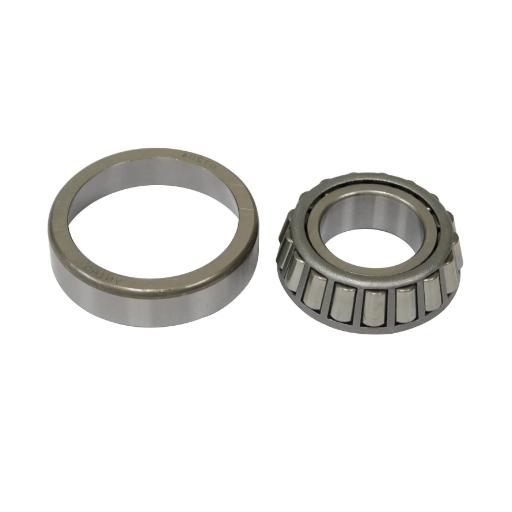
Best practices for spindle bearing maintenance
To maintain and lubricate spindle bearings, I develop and review a systematic maintenance routine to ensure the spindle bearings achieve maximum performance and longevity.
- Regular Cleaning: My procedure starts with cleaning the spindle housing together with its components; any foreign materials or parts that can affect the operation of the bearings are removed. The cleaning frequency will vary according to the operational surroundings. If the working environment is heavily contaminated, it will need to be checked weekly.
- Use of Correct Lubricant: I make sure to always choose the lubricant that best fits the spindle’s operational range like load, temperature, speed, etc.
- Controlled Lubrication Amount: I control the lubrication amount meticulously because excess grease causes overheating, while a lack of it increases friction. In the case of grease lubrication, the quantity used is around twenty to thirty percent of the free internal space available in the bearing.
- Monitoring Operating Temperatures: The spindle’s temperature is something I track during operation as well. Properly lubricated bearings achieve targeted operating temperatures and are devoid of overheating in recommended limits (typically under sixty degrees Celsius unless otherwise stated by the manufacturer).
- Scheduled Maintenance: I follow a strict maintenance plan where most spindle types are worked on every five hundred to one thousand operational hours and during these checks, I inspect for vibrations, noise, and wear.
By deploying these steps and keeping to the technical requirements, I enhance their performance in a manner that is efficient and economical with downtime and service life.
Lubrication techniques for high-speed spindles
When it comes to high-speed spindles, I use precise lubrication strategies that correspond to a spindle’s specific speed and operational requirements. Depending on the application, I primarily use two methods: grease lubrication and oil-air lubrication.
- Grease lubrication: This method is appropriate for spindles with moderate to high operating speeds. In these cases, high-performance, high temperature, low-friction greases are used. Most grease has an operating temperature of -40°C to 150°C which is suitable for most applications. Grease is typically applied during spindle assembly to ensure uniform distribution is achieved without overpacking, which can create excess heat.
- Oil-air lubrication: For ultra-high speed spindles (10,000 rpm and greater), I typically employ oil-air lubrication systems. In this case, micro quantities of oil (either synthetic or ultra-pure grade) are introduced with a stream of compressed air. The oil’s viscosity is also selected due to the spindle’s operating conditions, with ISO VG 10-22 being the most common.
In order to maximize performance, oil consumption rates along with lubrication intervals are monitored per the manufacturer’s suggestions. For instance, a standard oil air system uses about 0.01 to 0.03 ml of oil for every lubrication pulse. Following these technical specifications guarantees that lubrication is sufficient–an important factor for achieving ideal spindle performance and prolonging bearing life.
What are the differences between spindle bearings and hub bearings?
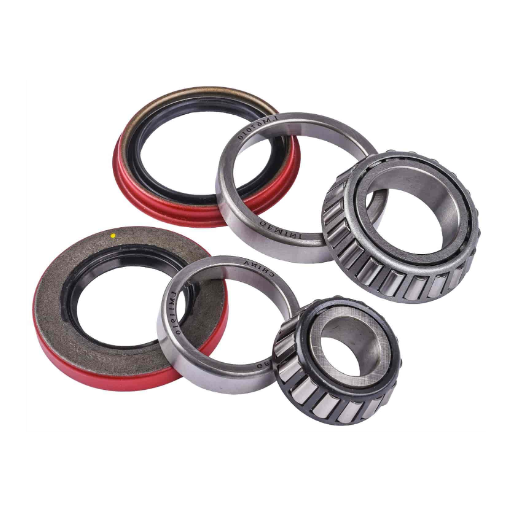
Spindle bearings vs. wheel hub bearings
There are important differences in the design, function, and technical requirements of spindle bearings versus wheel hub bearings. While spindle bearings are used typically within machining and industrial applications, they are designed for high-speed, high-precision work. They tend to be angular contact or cylindrical roller bearings, which have bespoke load capacities, speed ratings, and lubrication needs specific to an upper spindle performance. For example, some spindle bearings may run at less than 10,000 rpm, depending on how the machine is constructed. Their lubrication system requires oil-air or grease with a lubricant viscosity value somewhere between ISO VG 10 and IS VG 22.
On the other hand, wheel hub bearings are used in automotive applications, and they are meant to be tough for long service intervals under changing loads and road conditions. These are sealed units with integrated tapered roller bearings or ball bearings. Such bearings are expected to carry combined radial and axial loads and may withstand peripheral speeds of somewhere between 1000 to 3,000 rpm. Unlike spindle bearings, hub bearings have life-long seals, are pre-lubricated, and require little maintenance. They are subject to stringent automobile industry standards like ISO/TS 16949 for reliability and safety.
Each group of bearings serves unique functions as partitioned by spindle bearings, which focus on accuracy and rotational speed, and hub bearings, which prioritize long term load bearing and low maintenance. The comprehension of all factors ensures the optimal working conditions for specific bearing types in service.
Applications and characteristics of hub assemblies
Hub assemblies are influential parts in the car system and especially in the wheel-end system. Hub Assemblies are found mostly in light automobiles, trucks, and trailers for smooth rotation of the wheels and alignment during operation and different load forces. These assemblies are aimed at achieving higher efficiency and reliability through the consolidation of critical functional constituents, such as bearings, seals, and mounting flanges, to form a single unit.
- Load Bearing Capacity: Hub assemblies are designed to support both radial and axial loads of the weight of the vehicle and other energetic loads. For example, the parts have to accept multiple thousands of Newtons force under good working heavy duty conditions.
- Operating speed: The normal hub assembly can work under the speed of the range of 1000 to 3000rpm which is appropriate for most car applications without compromising duration.
- Service Life: Due to pre-packed and sealed design these units are maintenance free, having average service life of more than 100,000 miles operating under normal usage conditions.
- Standards Compliance: They conform to some of the tougher industry certifying such as ISO/TS 16949, which provide how the product is reliable, safe and consistent in the manufacturing process.
These features are fundamental in enabling hub assemblies to reduce the friction, ensure safety aboard and vehicle installation, and operational effectiveness in different environments at the same time addressing the performance requirements.
Axle and brake considerations in bearing selection
Assessing various criteria for accuracy and efficiency is crucial when selecting bearings for axle and brake systems.
- Load Capcity: Bearings must sustain both the radial and axial loads resulting from the braking actions. For example, many bearings that are assembled with the axle use tapered roller bearings because they manage combined loads exceptionally well.
- Temperature Tolerance: Braking systems have to overcome large amounts of heat which is guaranteed to influence the performance of the bearing. For heavy duty and high performance tasks, bearings are preferred which allow the attachments to be heated up to 300f (149 celsius).
- Rotational Speed: The bearing should not only support the rotational speed of the axle but also support proper still operations. Different speed ratings apply such as 2500-3000rpm for anything automotive.
- Durability and Wear Resistance: Relating to the wear from contaminants and vibration, bearings have to support a fair amount of wear. Robust steel components with double sealing systems improve lifespan in adverse conditions.
- Dimensional Compatibility: As with most components the bearing has certain dimensions which should correspond to the dimensions of the axle shaft and housing. To avoid issues with misalignment during the installation, follow the specifications from the manufacturer.
Through analysis of these factors and the usage of granular data you can choose the most applicable bearing for the axle and brake system reliability and safety during operations as well as to enhance its life span.
How to rebuild a spindle bearing assembly?
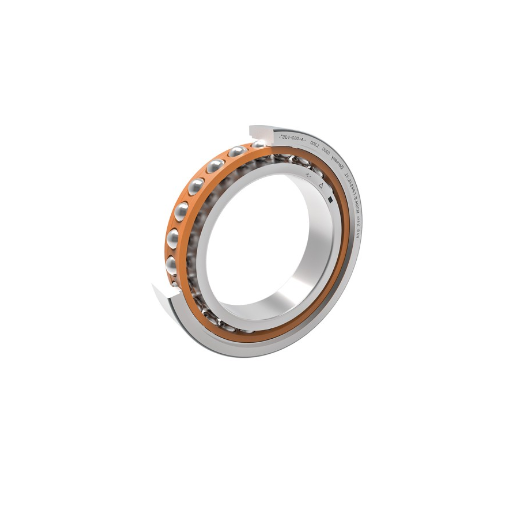
Tools and equipment needed for spindle repair
- Socket Wrench Set: Needed to loosen or tighten bolts for removing the spindle assembly. The set should have both metric and standard sizes for fastener coverage.
- Torque Wrench: Important when assembling parts to a specific torque that is usually found on the spindle or bearing’s specification, such as 50-200 ft-lbs.
- Bearing Puller or Separator: Needed for the removal of the spindle bearing and its housing while protecting the shaft and surrounding parts.
- Press Tool or Arbor Press: Ensures that new bearings are properly installed into the housing and allows for even distribution of housing to the bearing.
- Slide Hammer: This allows for the Easy removal of stubborn parts like spindle races that always tend to fit too snugly.
- Grease Gun: Used for lubricating the spindle bearing during assembly. Uses a high temperature grease rated for the operating environment, such as high lithium grease rated for 2500 psi.
- Micrometer or Caliper: Checking for spindle’s diameter and bearing’s width along with the housing gap to make sure they fit within the manufacturer’s limits.
- Cleaning Solvent and Cloth: Clean out all parts before assembly and make sure they are uncontaminated.
While reconstructing a spindle bearing assembly, I make it a point to have the right equipment handy, a torque wrench for accurate reassembly and a bearing puller in case I need to dismantle parts with minimal damage to them.
Common challenges in spindle bearing reassembly
A precise procedure like spindle bearing reassembly often proves to be a technical challenge. One of them involves torque settings during reassembly. For instance, a torque of 120 ft-lbs on specific bearings is vital; not doing so results in improper preload or mechanical failure. A calibrated torque wrench set to the manufacturer’s specification takes care of the problem.
Other than the aforementioned issue, contamination during assembly can be a problem as well, interfering with the integrity and lifespan of the bearing. Using an appropriate solvent and lint-free cloth effectively captures all the remnants, thus cleaning components optimally resolves the problem. Similarly, selecting the right lubrication is equally important, and high-temperature grease rated at 2500 psi is the go-to choice for heavily loaded applications. This selection rests solely on the manufacturer’s suggestion.
Having dealt with contamination issues, one is then faced with taking accurate measurements. If one isn’t careful, he may risk enduring overly loose fits or excessive friction. I have all parts checked against the required standards using precision instruments like micrometers and calipers alongside the technical specifications. Meeting these requirements guarantees that the problem is addressed properly.
Frequently Asked Questions (FAQs)
Q: What are the key features of taper roller bearings for spindles?
A: Taper roller bearings for spindles are particularly suitable for high-speed applications in machine tools. They have restricted tolerances, ensuring high guidance accuracy and suitability for high speeds. These bearings typically feature inner and outer rings with tapered raceways and a cage that holds the rollers in place.
Q: How do I choose the right spindle bearing for maximum speed?
A: To choose the right spindle bearing for maximum speed, consider factors such as the shaft size, load requirements, and desired rotational speed. Look for bearings indicated for high-speed applications, such as those in the “M series” or with ABEC ratings. Smaller bearing arrangements often allow for higher speeds. Consult with a bearing partner or manufacturer to ensure you select a product that meets your specific needs for guidance accuracy and suitability for high speeds.
Q: What is the importance of proper sealing in spindle bearings?
A: Proper sealing is crucial for spindle bearings as it prevents contamination and helps retain lubricant. High-quality seals protect the bearing from dust, debris, and moisture, which can significantly impact performance and lifespan. Some spindle bearings have integrated seals, while others may require external sealing solutions. Effective sealing is especially important in environments with high temperatures or where the bearing is exposed to coolants or cutting fluids.
Q: How often should I grease spindle bearings?
A: The frequency of greasing spindle bearings depends on factors such as operating conditions, speed, and load. Many modern spindle bearings are sealed and pre-lubricated, requiring minimal maintenance. For bearings that can be relubricated, follow the manufacturer’s recommendations. Generally, it’s important not to over-grease, as this can lead to increased heat generation and reduced performance. Some high-speed spindles use oil-air lubrication systems instead of grease for optimal performance.
Q: When should I consider rebuilding the spindle?
A: Consider rebuilding the spindle when you notice signs of wear or decreased performance. These signs may include increased vibration, reduced accuracy, unusual noises, or excessive heat generation. Don’t wait until the bearings fail, as this can cause more extensive damage to the spindle and machine. Regular monitoring and preventive maintenance can help you identify the right time for a rebuild. If you’re unsure, consult with a spindle repair specialist or the machine tool manufacturer.
Q: What are the advantages of flange-mounted spindle bearings?
A: Flange-mounted spindle bearings offer several advantages, including easier installation and improved alignment. The flange provides a secure mounting surface, reducing the risk of misalignment during installation. This type of mounting can also simplify the overall spindle design and make maintenance more straightforward. Flange-mounted bearings are often used in applications where compact design and high precision are required, such as in machine tool spindles and other high-speed rotating equipment.
Q: How do high temperatures affect spindle bearing performance?
A: High temperatures can significantly impact spindle bearing performance. As temperatures rise, the viscosity of the lubricant decreases, potentially leading to inadequate lubrication and increased wear. Excessive heat can also cause the bearing materials to expand, altering the internal clearances and affecting precision. Some spindle bearings are designed to withstand higher temperatures, often up to 60° Celsius or more. However, it’s crucial to monitor and control operating temperatures to ensure optimal performance and longevity of the bearings.
Q: What should I do if I hear audible noise coming from my spindle bearings?
A: If you hear an audible noise coming from your spindle bearings, it’s important to investigate promptly. Unusual sounds can indicate issues such as inadequate lubrication, contamination, or bearing damage. First, check the lubrication status and replenish if necessary. If the noise persists, inspect for any visible signs of damage or misalignment. In some cases, the noise might be due to normal wear, but it’s best to consult with a spindle repair specialist or the machine tool manufacturer to determine the cause and appropriate action. Don’t ignore bearing noises, as they can be early warning signs of impending failure.
UCTH213-40J-300 with Setscrew(inch)
CNSORDERNO: Normal-duty(2)
TOGN: UCTH213-40J-300
SDI: B-R1/8
SD: 2 1/2
UCTH212-39J-300 with Setscrew(inch)
CNSORDERNO: Normal-duty(2)
TOGN: UCTH212-39J-300
SDI: B-R1/8
SD: 2 7/16
UCTH212-38J-300 with Setscrew(inch)
CNSORDERNO: Normal-duty(2)
TOGN: UCTH212-38J-300
SDI: B-R1/8
SD: 2 3/8
UCTH212-36J-300 with Setscrew(inch)
CNSORDERNO: Normal-duty(2)
TOGN: UCTH212-36J-300
SDI: B-R1/8
SD: 2 1/4
UCTH211-35J-300 with Setscrew(inch)
CNSORDERNO: Normal-duty(2)
TOGN: UCTH211-35J-300
SDI: B-R1/8
SD: 2 3/16
UCTH211-34J-300 with Setscrew(inch)
CNSORDERNO: Normal-duty(2)
TOGN: UCTH211-34J-300
SDI: B-R1/8
SD: 2 1/8









